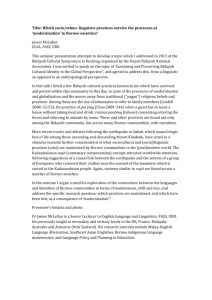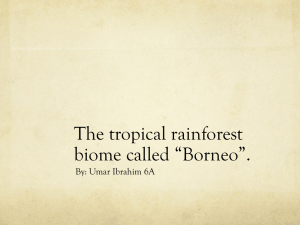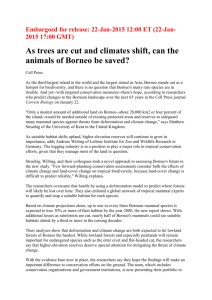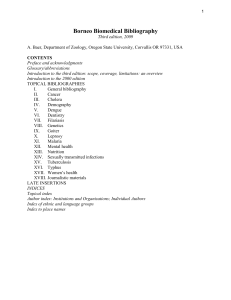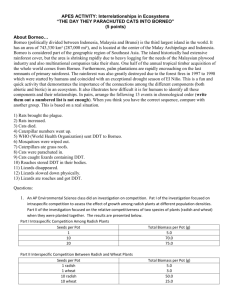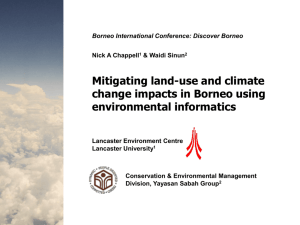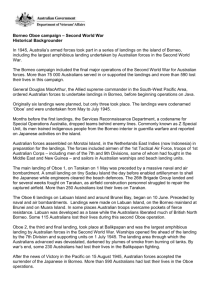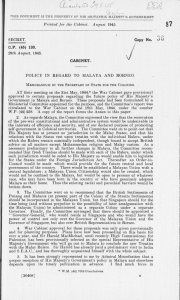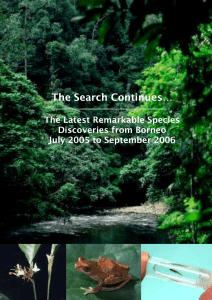Malaysia - The Association for the Study of Peak Oil and Gas
advertisement
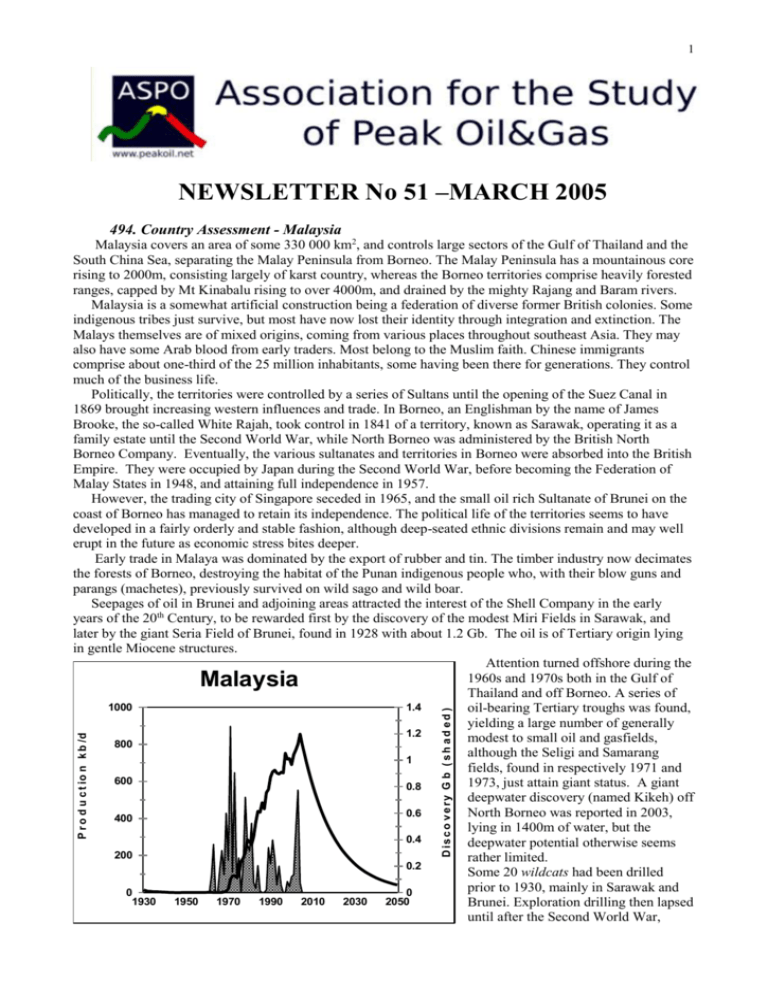
1 NEWSLETTER No 51 –MARCH 2005 494. Country Assessment - Malaysia Malaysia covers an area of some 330 000 km2, and controls large sectors of the Gulf of Thailand and the South China Sea, separating the Malay Peninsula from Borneo. The Malay Peninsula has a mountainous core rising to 2000m, consisting largely of karst country, whereas the Borneo territories comprise heavily forested ranges, capped by Mt Kinabalu rising to over 4000m, and drained by the mighty Rajang and Baram rivers. Malaysia is a somewhat artificial construction being a federation of diverse former British colonies. Some indigenous tribes just survive, but most have now lost their identity through integration and extinction. The Malays themselves are of mixed origins, coming from various places throughout southeast Asia. They may also have some Arab blood from early traders. Most belong to the Muslim faith. Chinese immigrants comprise about one-third of the 25 million inhabitants, some having been there for generations. They control much of the business life. Politically, the territories were controlled by a series of Sultans until the opening of the Suez Canal in 1869 brought increasing western influences and trade. In Borneo, an Englishman by the name of James Brooke, the so-called White Rajah, took control in 1841 of a territory, known as Sarawak, operating it as a family estate until the Second World War, while North Borneo was administered by the British North Borneo Company. Eventually, the various sultanates and territories in Borneo were absorbed into the British Empire. They were occupied by Japan during the Second World War, before becoming the Federation of Malay States in 1948, and attaining full independence in 1957. However, the trading city of Singapore seceded in 1965, and the small oil rich Sultanate of Brunei on the coast of Borneo has managed to retain its independence. The political life of the territories seems to have developed in a fairly orderly and stable fashion, although deep-seated ethnic divisions remain and may well erupt in the future as economic stress bites deeper. Early trade in Malaya was dominated by the export of rubber and tin. The timber industry now decimates the forests of Borneo, destroying the habitat of the Punan indigenous people who, with their blow guns and parangs (machetes), previously survived on wild sago and wild boar. Seepages of oil in Brunei and adjoining areas attracted the interest of the Shell Company in the early years of the 20th Century, to be rewarded first by the discovery of the modest Miri Fields in Sarawak, and later by the giant Seria Field of Brunei, found in 1928 with about 1.2 Gb. The oil is of Tertiary origin lying in gentle Miocene structures. Attention turned offshore during the 1960s and 1970s both in the Gulf of Thailand and off Borneo. A series of 1000 1.4 oil-bearing Tertiary troughs was found, yielding a large number of generally 1.2 modest to small oil and gasfields, 800 although the Seligi and Samarang 1 fields, found in respectively 1971 and 600 1973, just attain giant status. A giant 0.8 deepwater discovery (named Kikeh) off 0.6 North Borneo was reported in 2003, 400 lying in 1400m of water, but the 0.4 deepwater potential otherwise seems 200 rather limited. 0.2 Some 20 wildcats had been drilled prior to 1930, mainly in Sarawak and 0 0 1930 1950 1970 1990 2010 2030 2050 Brunei. Exploration drilling then lapsed until after the Second World War, D is c o v e r y G b ( s h a d e d ) P r o d u c t io n k b /d Malaysia 2 reaching peaks of about forty wells a year in 1970 and 1991, but has now declined to about half that number. It has resulted in the discovery of almost 10 Gb, of oil, of which almost 6 Gb have been produced. Exploration is now at a mature stage, as confirmed by the decline in drilling, and is not expected to yield more than about another 500 Mb. Production stands at 855 kb/d, which is believed to be the peak, being set to decline at about 6% a year, which is typical of an offshore environment. If so, production will have declined to about 570 kb/d in 2010 and 300 kb/ in 2020. Consumption stands at 520 kb/d meaning that the need for imports is set to rise markedly in the years ahead, which will likely pose a serious economic constraint. Gas production has risen to 1.7 Tcf/a from current reserves of some 85 Tcf, being mainly used for indigenous electricity generation, much in demand for air conditioning. Production can be held at this level for 20-30 years, assuming no increase in demand. Compiled by C.J.Campbell, Staball Hill, Ballydehob, Co. Cork, Ireland
